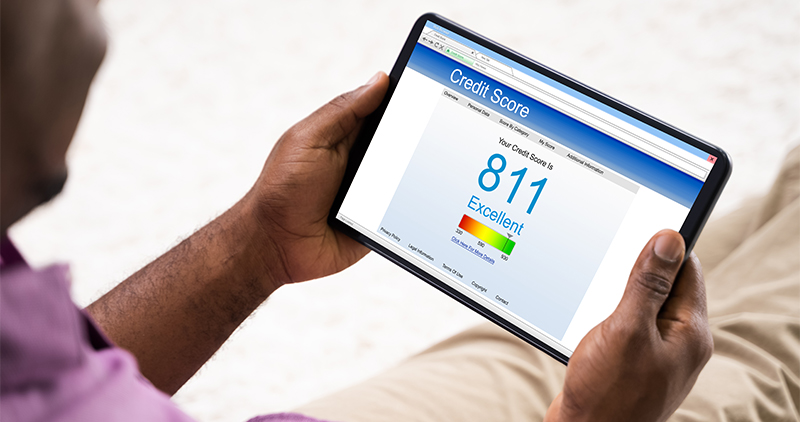7 Steps to Improve Your Credit Score
Learn how to improve your credit score with real, actionable steps everyone can use, whether you’re starting with “bad” credit or no credit.
5 min read

Hancock Whitney
Whether you're applying for a mortgage, financing a car, or qualifying for a credit card, your credit score plays a central role in realizing many of your dreams and goals. However, if your score falls into the “poor” category, it can be difficult to achieve these things.
Fortunately, there are concrete steps you can take to improve your credit score over time and start making your goals a reality. With patience and discipline, you can rebuild your credit and gain the financial freedom you need.
What Is a "Bad" Credit Score?
Most lenders assess creditworthiness using FICO scores, which generally range from 300 to 850. These scores are tracked by the three major credit bureaus: Experian, Equifax, and TransUnion.
Once your score has been calculated, FICO scores are broken down into the following ratings:
- Excellent: 800–850
- Very Good: 740–799
- Good: 670–739
- Fair: 580–669
- Poor: 300–579
A score below 580 is generally considered poor or "bad." A rating of poor is usually the cumulative result of missed payments, high credit card balances, accounts in collections, or limited credit history. Having a low credit score can make it difficult to secure good interest rates or even get approved at all for loans and credit cards.
But here's the good news: Bad credit isn't permanent. If you commit yourself and develop smart financial habits, it’s possible to turn your score around.
Tips for Rebuilding Your Credit
It’s important to understand that improving your credit score is a process that takes time. There isn’t a quick fix that will elevate your scores with all three credit bureaus.
With that in mind, here are seven tips anyone can use to build a good credit score, regardless of whether you’re starting with no credit or trying to recover from poor credit.
1. Pay Bills on Time to Improve Your Payment History
Payment history makes up 35 percent of your FICO Score, making it the single most important factor. Missed or late payments will significantly impact your credit score for the worse.
What you can do:
Set up automatic payments or reminders for due dates.
If you've missed payments in the past, start making consistent, on-time payments now. Over time, your recent payment behavior will carry more weight.
At Hancock Whitney, we offer online banking tools to help you stay on top of your bills and avoid missed payments.
2. Pay Down Debt to Reduce Your Amounts Owed
Amounts owed, or credit utilization, refers to how much of your available credit you're using. This accounts for 30 percent of your FICO score. Keeping your credit card balances low relative to your credit limit can help your score.
What you can do:
Keep your credit utilization ratio (CUR) below 30 percent, and ideally under 10 percent.
If possible, consider paying down balances more than once per month to maintain a lower average balance.
3. Keep Accounts Open to Improve Length of Credit History
The length of your credit history contributes about 15 percent to your credit score. This includes how long your accounts have been open and the average age of all your accounts.
What you can do:
Avoid closing old or unused credit cards, especially if they have no annual fee. Instead, keep your oldest accounts active, even if you need to make some minimal purchases to keep them open.
By maintaining longer-standing accounts, you can improve this factor over time. Remember that while it’s easy to close an account once you’ve paid it down, doing so might actually hurt your credit score and you likely won’t be able to re-open it.
4. Diversify Your Credit Mix
Your credit mix (the different types of credit you have) makes up about 10 percent of your credit score. Lenders like to see that you can manage different types of credit responsibly.
The “mix” mostly refers to having both revolving and installment credit accounts on your credit report.
- Revolving Credit: An account with a credit limit that you can borrow up to, pay down, then borrow up to again and again. Examples include credit cards, lines of credit, and HELOCs.
- Installment Credit: An account where you borrow the money in one lump sum, then make regular payments at a fixed rate to repay it. Examples include personal loans, mortgages, and auto loans.
What you can do:
If you only have one type of credit, consider responsibly adding a different type, such as a credit card if your credit report is missing revolving credit, or a small personal loan if you need installment credit. At Hancock Whitney, our team can help you explore products that fit your financial goals.
5. Limit Credit Inquiries to Control New Credit
Each time you apply for new credit, which overall contributes 10 percent to your FICO Score, a hard inquiry is made on your credit report, which can temporarily lower your score. Multiple hard inquiries within a short time can be a red flag to lenders, particularly when the inquiries are for different types of accounts.
What you can do:
Limit new credit applications unless necessary.
When shopping for rates (like auto loans or home loans), do so within a short window (typically fourteen days), so multiple inquiries from the same type of account can count as one.
6. Resolve Debt Currently in Collections
Debt in collections is a major red mark on your credit report. Paying off collections may not remove the account, but it can still help your scores and show lenders that you want to pay off your debt.
What you can do:
Contact the collection agency or creditor to negotiate a payment plan or settlement. You can also ask for a “goodwill deletion” once you’ve paid the debt, where the agency removes the collection account once it’s resolved (not all agencies will agree, but it's worth asking).
7. Check Your Credit Report for Errors
Errors on your credit report—such as incorrect account statuses or fraudulent activity—can drag down your score without you even realizing it.
What you can do:
You're entitled to a free credit report annually from each of the three major bureaus at AnnualCreditReport.com.
Review your report for mistakes and dispute inaccuracies directly with the credit bureau. Be prepared to provide proof of what you’re disputing, where possible.
How Long Will It Take to Improve My Credit Score?
Unfortunately, there are many variables that impact the answer to this question, which means that the answer is different for everyone. However, most people will begin to see meaningful improvements within three to six months of consistent, positive behavior.
More significant changes, such as moving from "poor" to "good" credit can take twelve to twenty-four months or longer. Factors that influence the timeline include the following:
- The severity and age of negative marks
- Your current credit mix
- How quickly you reduce your debt
The key is persistence. Improving your credit score is not an overnight process, but with time, your efforts will pay off.
Improving Your Credit Score Takes Time
Bad credit doesn’t have to define your financial future. By understanding the factors that influence your credit score and taking action, you can rebuild your credit and eventually open new doors for borrowing, saving, and financial independence.
At Hancock Whitney, we’re committed to helping you build a brighter financial future. Feel free to explore our range of personal banking products and financial education resources. When you’re ready, you can take the next step toward improving your credit with confidence.
Disclosures
The information, views, opinions, and positions expressed by the author(s), presenter(s), and/or presented in the article are those of the author or individual who made the statement and do not necessarily reflect the policies, views, opinions, and positions of Hancock Whitney Bank. Hancock Whitney makes no representations as to the accuracy, completeness, timeliness, suitability, or validity of any information presented.
This information is general in nature and is provided for educational purposes only. Information provided and statements made should not be relied on or interpreted as accounting, financial planning, investment, legal, or tax advice. Hancock Whitney Bank encourages you to consult a professional for advice applicable to your specific situation.
Hancock Whitney Bank, Member FDIC and Equal Housing Lender.  All loans and accounts subject to credit approval. Terms and conditions apply.
All loans and accounts subject to credit approval. Terms and conditions apply.
Explore more Insights
Get financial insights delivered to your inbox
Sign up to receive regular updates from our team of experts.









